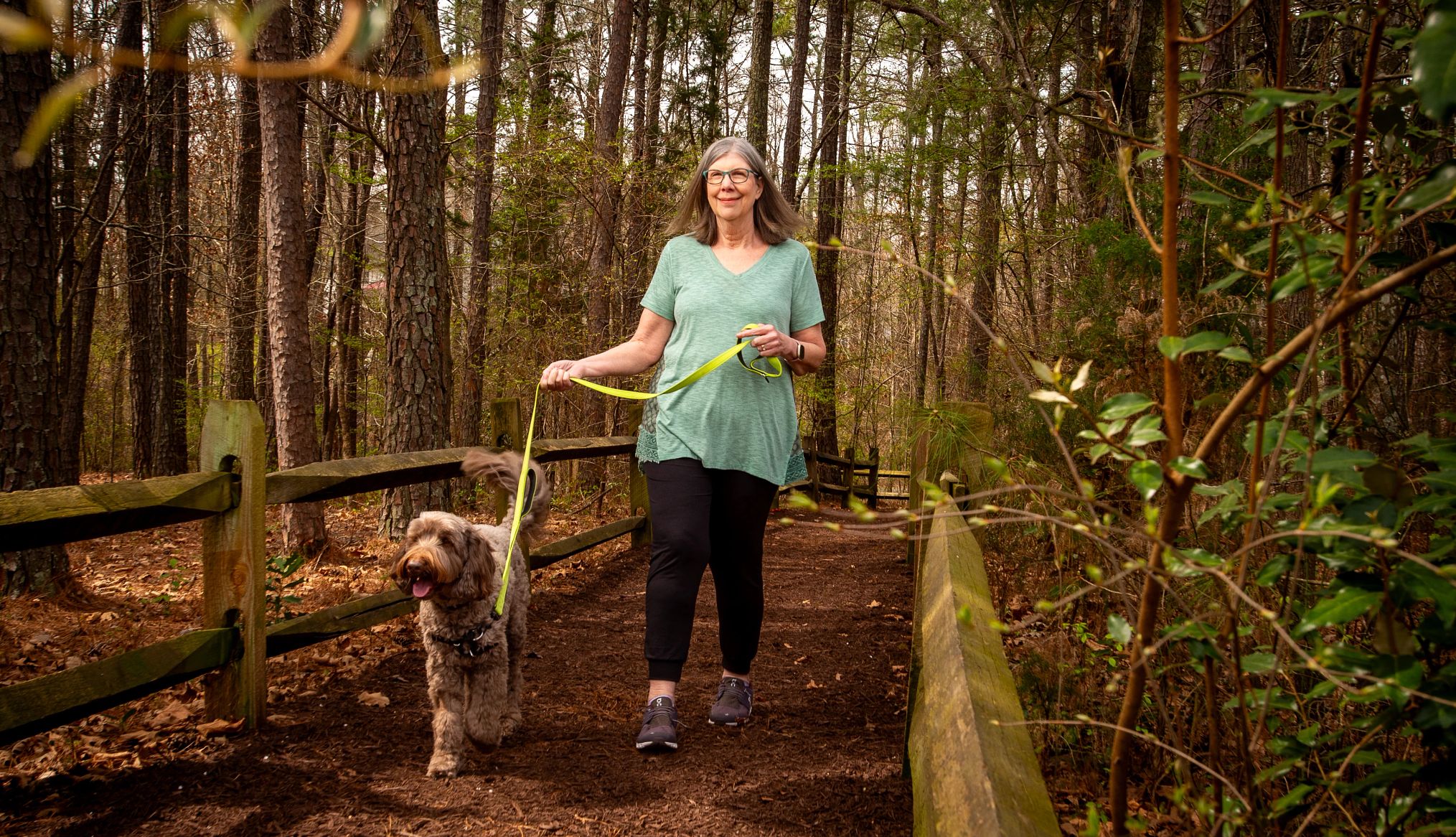AARP Hearing Center


Retired counseling psychologist Angela Cheney, 70, lives in Durham, North Carolina. She follows the online strength training course Liftoff: Couch to Barbell by Casey Johnston.
I’ve never been athletic. But I was diagnosed with stage 3C ovarian cancer in 2019, and once I’d finished three and a half years of treatments, I felt an obligation to take good care of my body. Others had worked so hard to keep me alive.
Last year, after my doctor told me I have no evidence of disease, I heard about a beginners’ weightlifting program I could do at home. Nothing crazy. Just slow and steady progress.
I was still weakened from my cancer treatments, but I decided to try it. Starting with body-weight exercises and moving on to 2- and 3-pound weights, I gradually gained strength. Within a month, I could lift my food processor from a bottom shelf to the counter. I began to feel more confident. So I kept at it, and I kept progressing. And to my surprise, it was fun. There was joy in the challenge.


Eight months later, I was feeling pretty proud of myself. Once, when I was boarding an airplane, a very nice young man offered to put my carry-on in the overhead for me. “No thanks,” I told him. “I want to do it!” I hoisted that baby up in the most satisfying way — and he cheered me on.
But I didn’t fully understand how much strength I’d gained until I was injured last November. While walking my 44-pound labradoodle, Loki, I stopped to chat with a neighbor. I didn’t notice another neighbor walking up behind me, but Loki did, and in pulling away to go see his friend, my dog yanked me backward. I fell and broke my wrist and pelvis.
After wrist surgery, I was sent to an inpatient rehabilitation program. I had one leg and one arm out of commission. Plenty of young male nurses were around to help me get to the toilet and “supervise” me. I can’t even describe the mortification of that! But it turned out that the noninjured side of my body was strong enough for me to transfer myself from bed to wheelchair to toilet in privacy. The nurses were surprised, and so was I. I finished my rehab program in one week instead of the usual two.
Since then, I have worked hard on my recovery and have graduated from walker to cane to nothing. And I’ve gotten back to lifting weights — with my physical therapist’s approval, of course. Recovering from my fall wasn’t easy, but it was like strength training: I knew that if I followed the steps, I was bound to improve.
Life is going to throw things at us unexpectedly, but now I believe I can deal with whatever’s going to come. With age, it’s natural to shrink. Lifting weights gave me a way to grow.































.jpg?crop=true&anchor=13,195&q=80&color=ffffffff&u=lywnjt&w=2008&h=1154)





























You Might Also Like
Woman Faces Fear of Heights
Dierdre Wolownick, mother of noted rock climber Alex Honnold, followed in his footsteps
Peter Westbrook Teaches Kids Fencing
Olympian fencer shares why he started his foundation and what it’s taught him
‘I Don’t Want to Die With Regret’
TV producer Caragh Donley on what prompted her to come out as transgender at age 63
Recommended for You